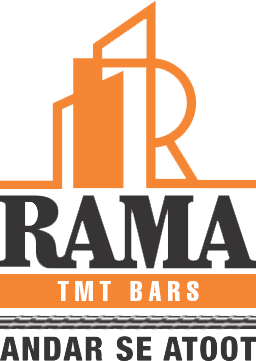Steel is the backbone of modern construction, providing the essential strength and durability needed for a wide range of applications. High-quality steel, in particular, is crucial for producing reliable and resilient materials like Thermo-Mechanically Treated (TMT) bars, which play a vital role in reinforcing concrete structures. This article explores the different types of high-quality steel, their properties, and their specific applications, with a focus on how these steels are utilized in the manufacturing of tmt (saria).

What is High-Quality Steel?
High-quality steel is characterized by its superior mechanical properties, including strength, ductility, and resistance to environmental factors. These properties are achieved through precise control of the steel’s chemical composition and the saria manufacturing process. High-quality steel is essential for applications where performance and safety are paramount, such as in the construction, automotive, and aerospace industries.
Types of High-Quality Steel
1. Carbon Steel: Carbon steel is one of the most commonly used types of steel, distinguished by its carbon content, which ranges from low to high levels. It is classified into three main categories:
- Low Carbon Steel (Mild Steel): Contains up to 0.3% carbon, offering good weldability and machinability. Used for structural components, pipelines, and machinery.
- Medium Carbon Steel: Contains 0.3% to 0.6% carbon, providing a balance between strength and ductility. Suitable for automotive parts, gears, and shafts.
- High Carbon Steel: Contains 0.6% to 1.0% carbon, known for its hardness and wear resistance. Used for tools, blades, and high-strength wires.
2. Applications in TMT Bars: High-carbon steel is particularly important for TMT bars due to its ability to enhance tensile strength and hardness. This type of steel is used to produce reinforcement bars that can withstand significant loads and stresses, making it ideal for high-rise buildings, bridges, and industrial structures.
3. Alloy Steel: Alloy steel is made by adding alloying elements such as chromium, nickel, molybdenum, and vanadium to carbon steel. These elements improve various properties of the steel, including strength, toughness, and resistance to wear and corrosion.
Types of Alloy Steel:
- Chromium Steel: Offers high wear resistance and hardness. Used in machinery and automotive components.
- Nickel Steel: Enhances strength and impact resistance. Used in structural components and high-strength applications.
- Molybdenum Steel: Improves strength and resistance to high temperatures. Commonly used in industrial applications and high-pressure environments.
4. Applications in TMT Bars: Alloy steel is used in TMT bars to enhance their mechanical properties and resistance to environmental factors. For example, nickel-alloyed TMT bars provide improved ductility and resistance to corrosion, making them suitable for use in harsh environments and seismic areas.
5. Stainless Steel: Stainless steel contains a minimum of 10.5% chromium, which forms a protective oxide layer that prevents rust and corrosion. It is known for its excellent corrosion resistance, strength, and aesthetic appeal.
Types of Alloy Steel:
- Austenitic Stainless Steel: Offers high corrosion resistance and good formability. Used in kitchen appliances, chemical processing, and medical instruments.
- Ferritic Stainless Steel: Known for its magnetic properties and resistance to stress corrosion. Used in automotive parts and industrial equipment.
- Martensitic Stainless Steel: Provides high strength and hardness. Used in cutting tools and high-strength applications.
6. Applications in TMT Bars: While not commonly used for standard TMT bars, stainless steel is sometimes used in specialized applications where extreme corrosion resistance is required. For example, stainless steel TMT bars might be used in coastal or marine environments where high resistance to saltwater corrosion is essential.
7. Tool Steel: Tool steel is a high-carbon steel designed for manufacturing tools and dies. It is known for its hardness, wear resistance, and ability to retain a sharp edge.
Types of Tool Steel:
- High-Speed Steel (HSS): Used in cutting tools and drills due to its ability to withstand high temperatures.
- Cold Work Tool Steel: Used for tools that operate at room temperature, such as punches and dies.
- Hot Work Tool Steel: Designed for tools that operate at elevated temperatures, such as molds and dies.
8-Applications in TMT Bars: Tool steel is not typically used in TMT bar manufacturing. However, it plays a crucial role in the production process, such as in the manufacturing of molds and dies used for shaping and treating TMT bars.
Applications of High-Quality Steel in TMT Bars
- Construction: High-quality steel TMT bars are essential for reinforcing concrete in construction projects. Their strength and durability ensure that structures can support significant loads and resist environmental challenges.
- Infrastructure: TMT bars are used in the construction of bridges, highways, and tunnels. The high strength and durability of the steel ensure the safety and longevity of these critical infrastructure components.
- Industrial Projects: TMT bars are used in industrial applications where high load-bearing capacity and resistance to harsh conditions are required. Examples include power plants, factories, and warehouses.
Understanding the types and applications of high-quality steel is crucial for selecting the right materials for TMT bar manufacturing. Each type of steel—whether carbon, alloy, stainless, or tool steel—offers unique properties that cater to specific needs in construction and infrastructure. By leveraging these properties, manufacturers can produce TMT bars that meet the highest standards of performance and reliability.
For TMT saria manufacturers, the choice of steel and its alloying elements directly impacts the quality and effectiveness of the final product. Investing in high-quality steel ensures that TMT bars can withstand the rigors of their applications, providing strength, durability, and safety to the structures they reinforce.
